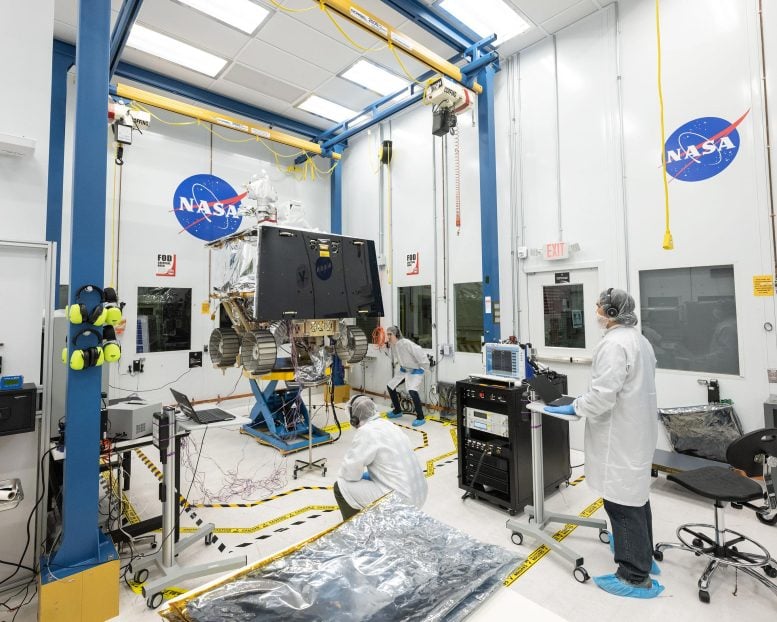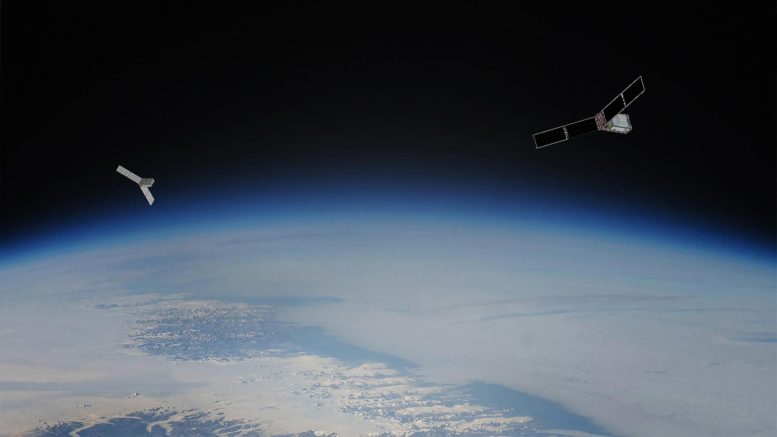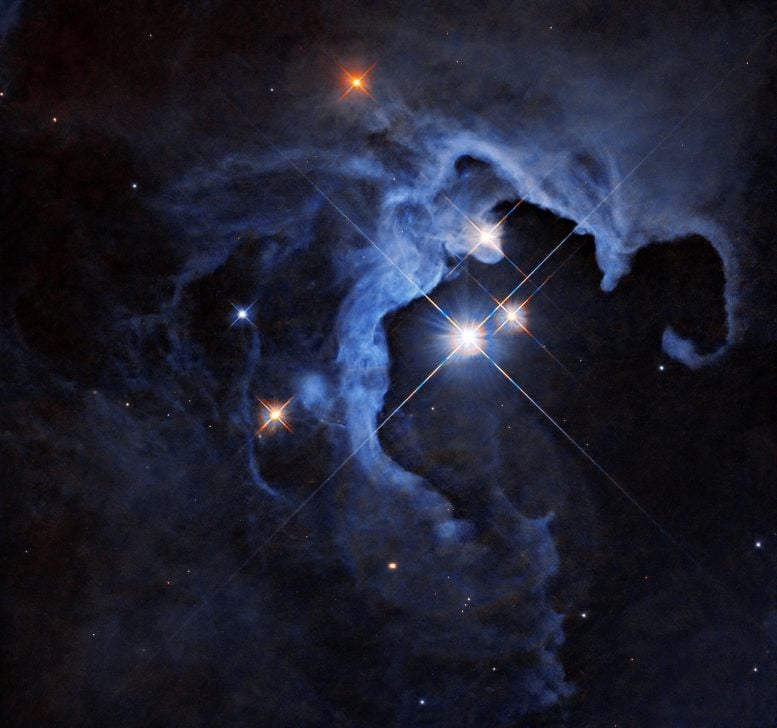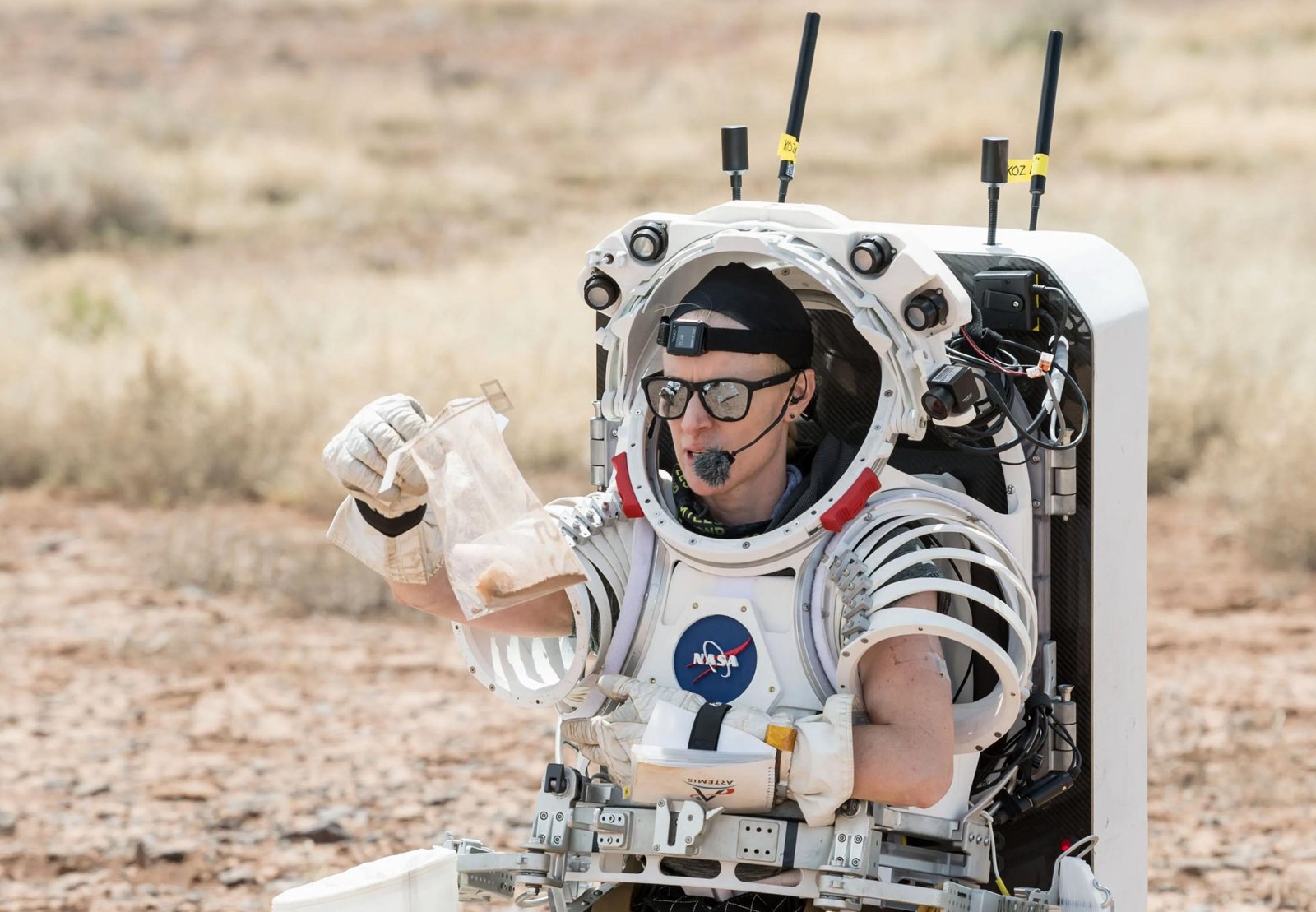NASA astronaut Kate Rubins observes a geology sample she collected during a simulated moonwalk. Credit: NASA/Josh Valcarcel
Practicing Artemis Moonwalks in the desert …
A developmental milestone for NASA’s lunar-roving robot …

And previewing NASA’s new polar climate mission …
A few of the stories to tell you about – This Week at NASA!
Practicing Artemis Moonwalk Activities in the Arizona Desert
In preparation for Artemis missions on the Moon, NASA conducted a week-long field test near Flagstaff, Arizona.
With flight controllers and scientists monitoring activities from the Johnson Space Center in Houston, a field team, including NASA astronauts Kate Rubins and Andre Douglas, practiced moonwalk scenarios, performed technology demonstrations, and conducted hardware checkouts and other Artemis science-related operations.
This was the highest fidelity Artemis moonwalk mission simulation the team has performed to date.

Engineers test the VIPER rover’s wheel movement and rotation in a clean room at NASA’s Johnson Space Center in Houston. Credit: NASA/Helen Arase Vargas
VIPER Rover Approved for Environmental Testing
The team building NASA’s VIPER lunar rover recently passed a System Test Readiness Review – clearing the team to begin environmental testing of the rover. The environmental tests will simulate the extreme conditions the rover will see during launch and landing, as well as replicate the harsh environmental conditions it will experience at the lunar South Pole region.
VIPER will search the Moon for ice and other potential resources ahead of future Artemis astronaut missions to the lunar surface.

The PREFIRE (Polar Radiant Energy in the Far-InfraRed Experiment) mission will send two CubeSats – shown as an artist’s concept against an image of Earth from orbit – into space to study how much heat the planet absorbs and emits from its polar regions, including the Arctic and Antarctica. Credit: NASA/JPL-Caltech
Previewing NASA’s New Polar Climate Mission
NASA’s PREFIRE mission – short for Polar Radiant Energy in the Far-InfraRed Experiment – aims to improve life on Earth by studying heat loss from our polar regions and by providing information on our changing climate.
Much of our planet’s polar heat loss is in far-infrared wavelengths and has never been systematically measured. The first of the mission’s two shoebox-sized satellites is targeted to launch no earlier than May 22.

This NASA Hubble Space Telescope image captures a triple-star star system. Credit: NASA, ESA, G. Duchene (Universite de Grenoble I); Image Processing: Gladys Kober (NASA/Catholic University of America)
Hubble Views the Dawn of a Sun-Like Star
This new image from NASA’s Hubble Space Telescope shows a triple-star system located about 550 light-years away in the constellation Taurus.
One of the stars – called HP Tau – is a type of young variable star that hasn’t begun nuclear fusion yet but is beginning to evolve into a hydrogen-fueled star like our Sun. This type of star tends to be younger than our Sun is around 4.6 billion years old.
That’s what’s up this week @NASA!










